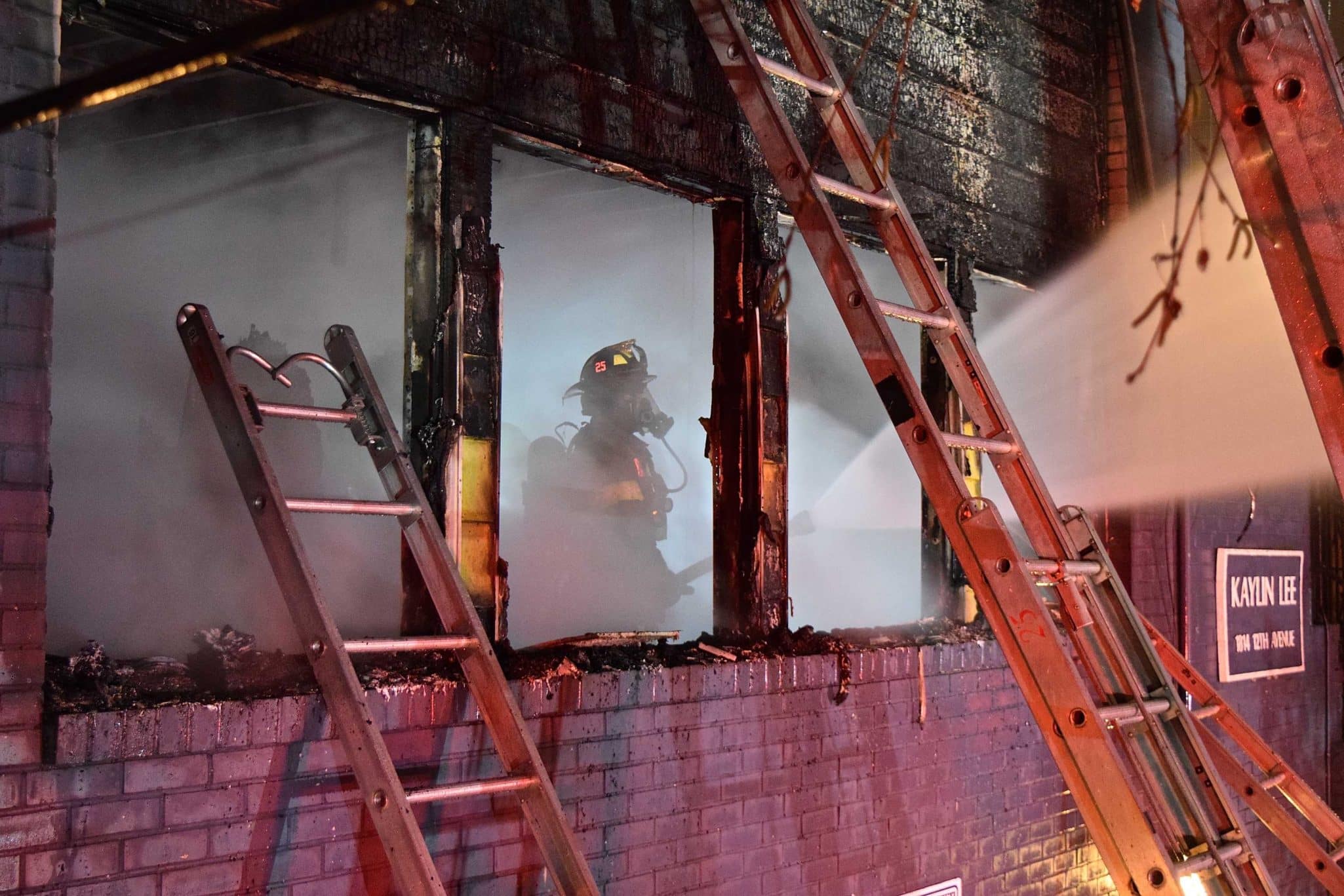
Fire Smoke

Illness, Disease and Death
The extensive commercial and residential use of synthetic materials (plastics, nylons and polymers such as Styrofoam and polyurethane foam) has a significant impact on combustion and fire behavior, as well as the smoke produced during a structure fire. The majority of these materials are carbon based, bonded with various atoms like hydrogen, nitrogen, chlorine, and sulfur. Synthetic substances ignite and burn fast, causing rapidly developing fires and toxic smoke and making structural firefighting more dangerous than ever before.
Fire Smoke Exposure
A mattress fire in a small bedroom is an example of the toxicity firefighters routinely encounter at a structure fire. Polyurethane foam is the most predominate substance in a typical mattress and contains several chemicals – polyol (an organic alcohol molecule and the predominant ingredient in the polyurethane compound), toluene diisocyanate (or TDI), methylene chloride, and ammonia-based catalysts. When polyurethane foam is exposed to heat, the parent substances break down and bond with each other, creating other new compounds. Some of those compounds are irritants, such as hydrogen chloride and ammonia, causing eye irritation or airway problems during smoke exposure.
The mattress example is demonstrative of countless items found in a typical residential fire that replicate the same toxic effects. Sofas, stereo cabinets, drapes, blankets, and carpeting all produce cyanide and other common toxins as by-products of combustion. Vehicle fires are also capable of generating cyanide, along with almost everything found in garage or dumpster fires. It would be safe to conclude that firefighters are assaulted with toxic gases, including cyanide, in virtually every fire scenario imaginable.


The Toxic Twins, Cancer & Disease
Cancers are usually not caused by one injury to the cell, but by repeated exposures, often acting at different sites in the same cell. This means that cancers do not usually develop soon after an exposure, but can take years of repeated exposure to develop. The lag time between exposure and the development of a cancer is called the latency period, and it can endure for many years and often decades. This means that the relationship of the cancer to the exposure is often not recognized and can be very hard to prove. The firefighter who suffers from a work-related cancer may never be able to prove the association.
It is very important to realize that even if a firefighter is not working in a low oxygen environment, he is still exposed to chemical asphyxiants and cancer-causing substances.
Dr. Jean McMahon is board certified in Internal Medicine and in Occupational and Environmental Medicine with a special interest in firefighter health and safety, states in: Smoke: Carbon Monoxide and Hydrogen Cyanide, that another immediate effect of exposure to smoke that is probably under-appreciated is consequences to the heart after exposure to particles. Short-term exposure to particles has been associated with triggering heart attacks, particularly among people with pre-existing heart disease. Furthermore, long-term repeated exposure to elevated concentrations of particulate matter has been associated with heart disease and the initiation and progression of “hardening of the arteries.”
Which brings us to another underappreciated effect of exposure to smoke — the death of individual cells. Even if the entire organism is not killed by a given exposure, such exposures can kill individual cells in an organism. Again, the cells most susceptible to this effect are those in the heart and brain. As time goes on, the cumulative effects of such cell death at repeated exposures can result in chronic heart and nervous system disease.

Toxic Twins: HCN & CO
Read Smoke: Cyanide and Carbon Monoxide; The Toxic Twins of Smoke Inhalation
Firefighter Cancer Resources



